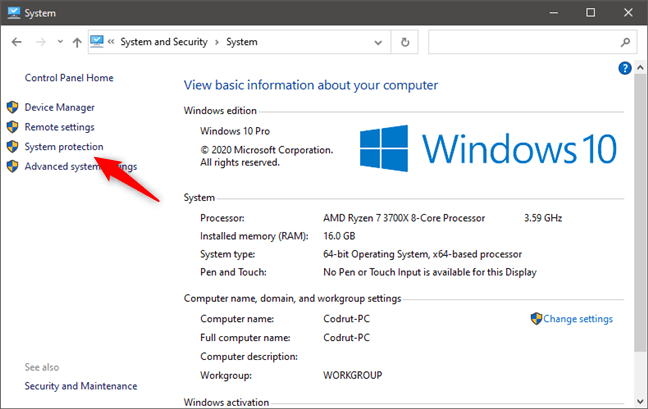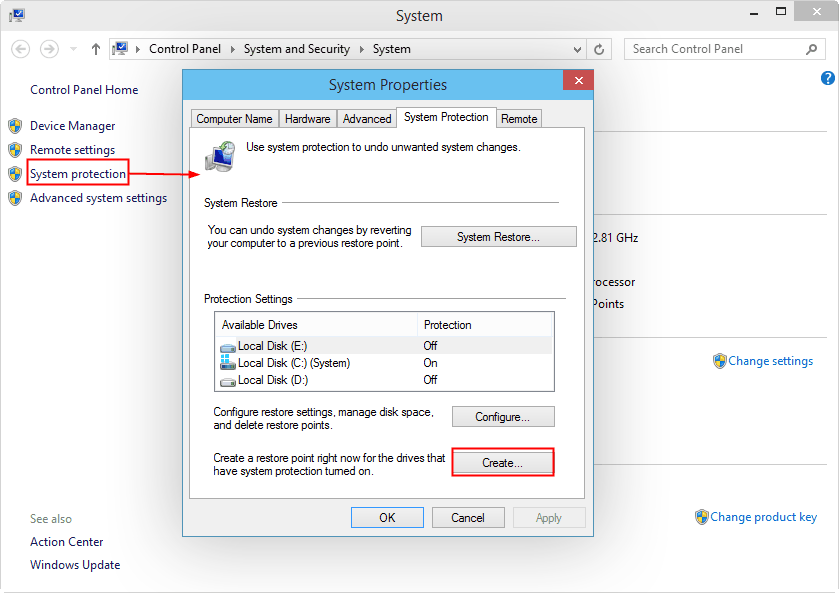Windows OS is a very steadfast OS with proper structuring and stability, but still. The OS is prone to issues and errors. Well, there are many worst errors that can be detrimental to the computer and the one option that can be tried to fix the issue is trying out the system restore.
The feature of system restore has been there on Windows for decades. It is nothing new to users and the first time it was implemented in the OS was with Windows 2000. The feature is being used to date to fix complex errors and issues with the computer.

So, if you are new and are looking for a fix for an issue on your computer and wondering when and how to use the system restore feature, here is a detailed view on when to use the tool. You can use the system restore feature on Windows 10 when there is any file gone corrupt or any issue that is un-resolvable with simple methods. Well, what the system restore does is it will restore the system to a previous time, where there is no issue with the computer or the OS was functioning perfectly. This system restores feature should be kept as a final resolve for any kind of error on the computer, because why take a long path for fixing a simple resolvable issue on Windows 10.
Well, the system restore will change only particular files, and they are system files, registry files, program files, batch files, and other executable files. These are some of the most important files that help in running the OS and the applications on the computer. Well, with the system restore on the computer, recovering the computer from a harsh issue is made easier. So, learning to use this feature on Windows 10 is a real lifesaver. So, here in this article, we will discuss the whole process of effectively using the system restore feature, so, you can use the feature and fix any issue with the computer.
Recommended Post:- Fixed: Battery Icon is Missing on Windows 10 – Step by Step Guide
How to Enable the System Restore on a Windows 10 Computer
Well, the system restore feature will not be enabled by default in Windows 10 and you have to do it manually. So, to enable the system restore feature on your computer, follow the below-mentioned method.
- To enable the system restore feature, open the search bar by pressing the Windows key and the S key on the keyboard.
- Here, search for “create a restore point” and then click on the first result.
- Now, the system properties will open.
- Here, under the system protection tab, select the main system driver.
- Now, click on the configure button.
- Now, select the check box near, turn on system protection.
- Now, you can slide the bar near the max usage to set the disk size.
- Now, click on apply and then on Ok to save the cganges.

So, now the system restores feature will be enabled on your Windows 10 computer. Now, Windows 10 will automatically create a restore point, which you can use to restore your computer in the future.
How to Manually Create a System Restore Point
Even with the windows operating system automatically creating the restore point, you can manually create one if you are going to do some installation or a task that you are unsure of the outcome.
- To manually create a restore point, open the search bar from the taskbar or use the shortcut key(Windows key and S key).
- Here, search for create a restore point and select the first option of system properties.
- Here in the system properties, go to the system protections tab.
- Here, select the create option and enter a description that you will remember.
- Now click on create.
- Now, close the tab and then click on the Ok button and finally close the whole properties page.
This is how you can manually create a system restore point. If you are done, you can use this at any time.
How to Recover System Using the System Restore Feature on Windows 10
If the computer goes haywire after you had installed something or changed the system files, you can use the system restore and revert back your computer to an old time, where the system was fine and working.
- To restore your computer, open the search bar by pressing the Windows key and the S key on the keyboard.
- Here, in the search bar, search for creating a restore point and then click the first option.
- Now, you will be in the system properties window.
- Here click on the system protection tab.
- Here, click on the system restore button.
- Now click on the Next button.
- Here, click the Scan for affected programs button.
- Now click on the close button.
- Click on the Next button and then the finish button.

Well, this is how you can easily use the system restore function on Windows 10. The method is pretty simple, if you want to use the restore function from the advanced startup mode which is a pretty long process, you can actually do that. Both the methods are similar and effective with restoring the computer to an old time.
Hope the information provided above was hopeful and informative. With these simple step-by-step guides to enable the system restore feature, create a restore point and then restore then trying to restore the computer would have provided you with enough guidance with using the system restore on Windows 10.







